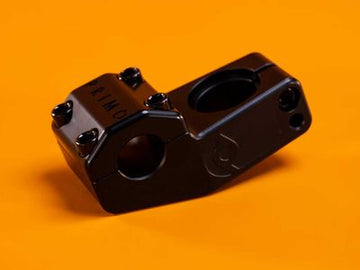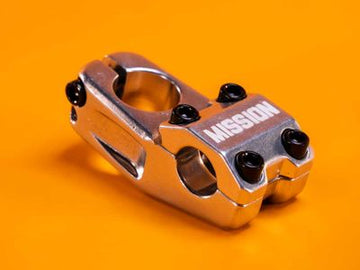BMX Stem Buyers Guide
Get the right stem for you
BMX stems come in all different shapes, sizes and prices. In this guide we will run through a few considerations that need to be made before locking a new one in!
Step
01.
Top Load / Front Load
The obvious difference between stems is the point at which the bars are connected. The two main types (excluding some variations over the years) are respectively top-loading, where the bar is loaded from the top of the stem and the plate is clamped down on the base of the stem. On the other hand, front-load stems are loaded from the front edge of the stem and the bolts screwed into the front of the stem body. While both types of stems...
Step
02.
Reach and Rise
The reach of the stem is the distance from the center of the steerer tube to the center of the handlebar channel. This distance has an effect on the way your bike will feel as it essentially is lengthening the top tube of your bike. By lengthening the distance to where you hold the handlebars your bike will feel longer. The average reach on most stems is 50mm, with shorter stems 48mm and longer stems 58mm This is an important...
Step
03.
Materials / Manufacturing
The vast majority of BMX stems are made from strong, lightweight aluminium alloy, with 6061 and 7075 being the two most common types. 7075 is regarded as having a higher strength to weight ratio. Most higher-end BMX stems will feature extensive CNC machining to shed weight without compromising strength. The machining process maximizes strength as it is cut from one block of material so no joins will be needed. This process is very common for most stems that range in...
Step
04.
Pricing
Due to the many processes and material combinations BMX companies have access to, BMX stems range in price from $39.95 to over $200.00 Understanding the processes and materials of how the stems are made can help to understand the difference in price point, like most things, the more you pay the better the quality of the product your buying. Although your stem might not seem like the biggest deal on your bike, it’s a part that needs to be considered. A...












